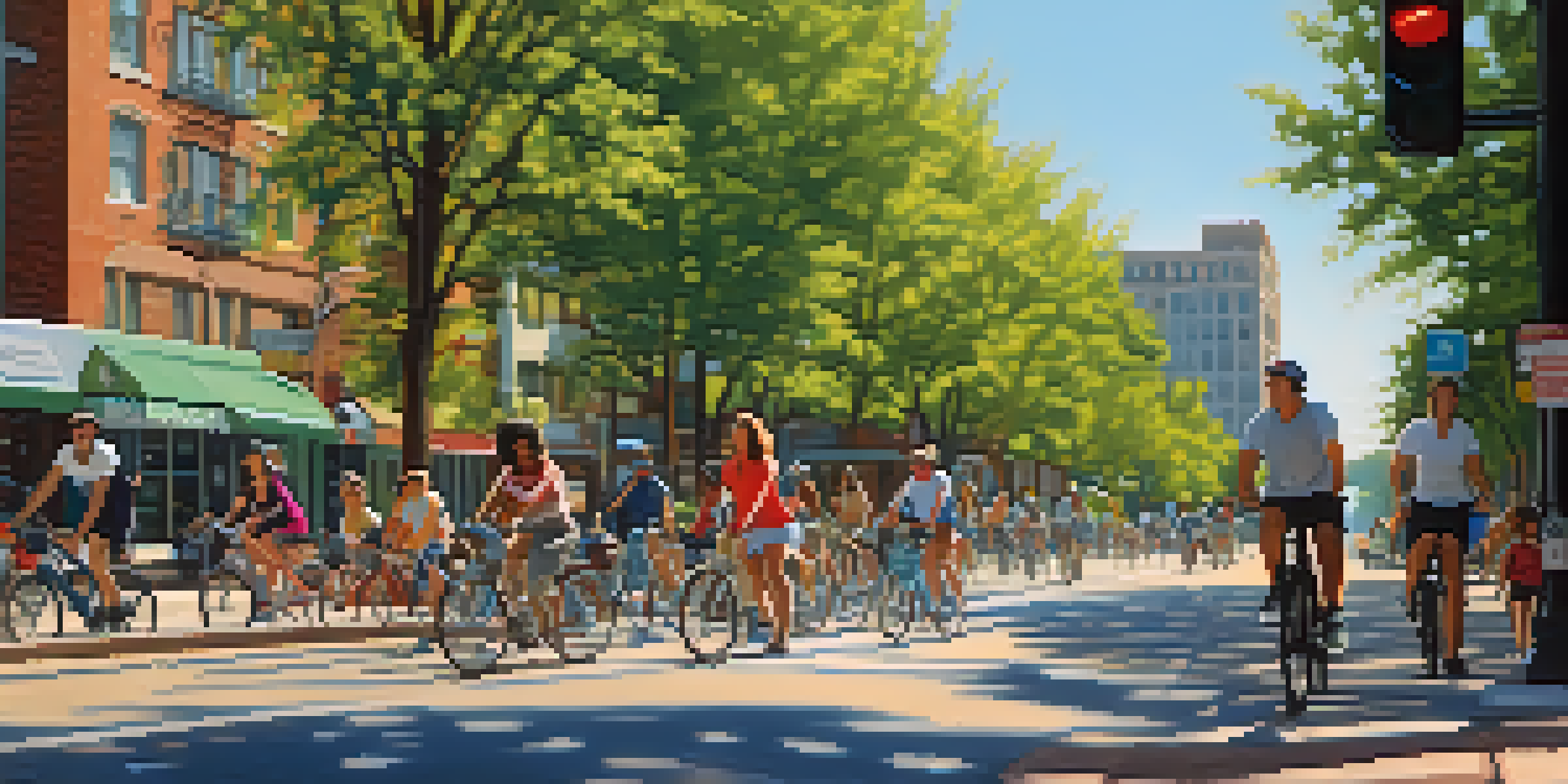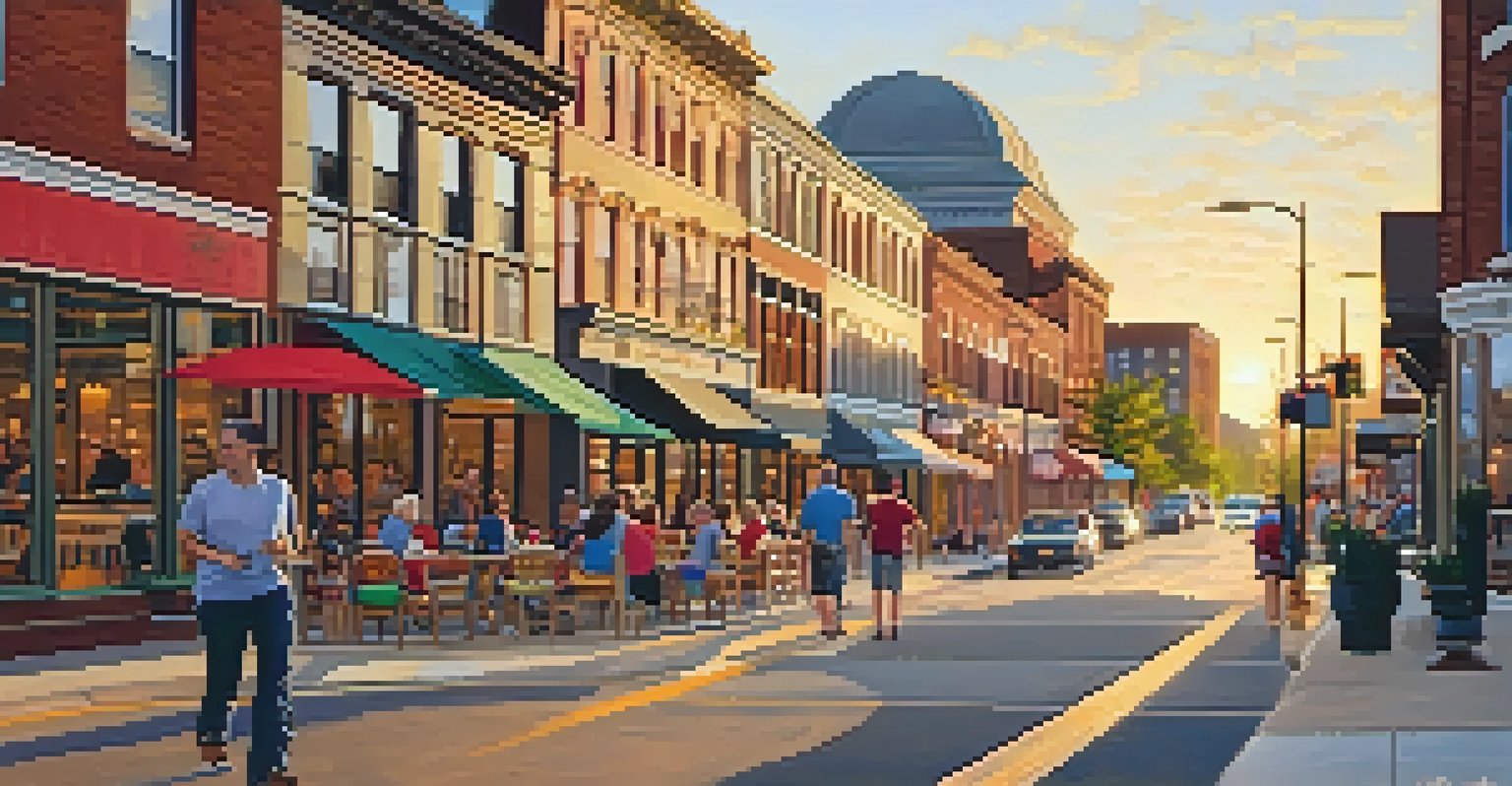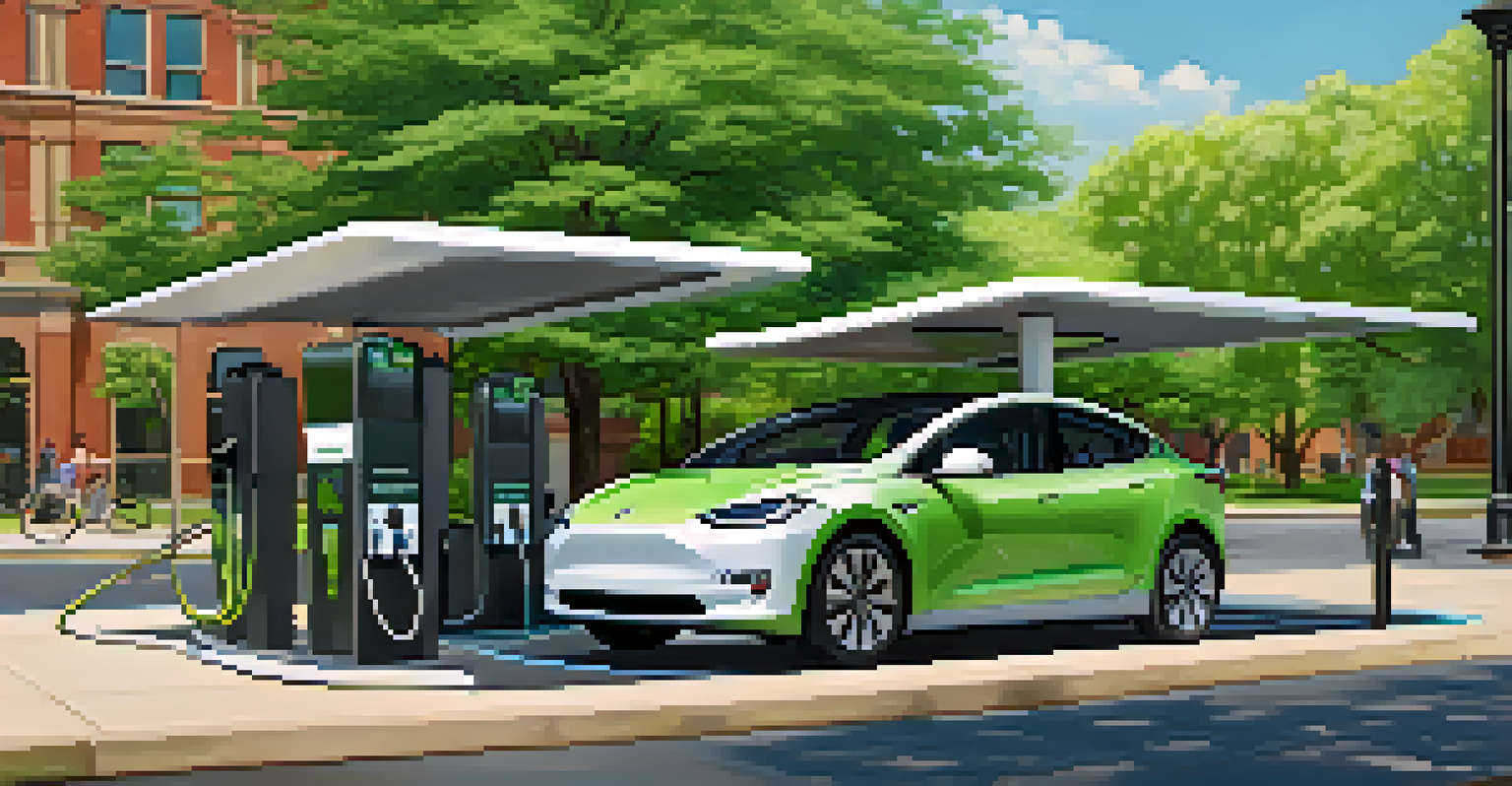Eco-Friendly Transportation Initiatives in St. Louis

Overview of Eco-Friendly Transportation in St. Louis
St. Louis is making strides towards a more sustainable transportation system, focusing on reducing carbon emissions and promoting healthier travel options. The city's initiatives aim to enhance public transit, cycling, and walking, making it easier for residents to choose eco-friendly alternatives. By investing in these programs, St. Louis is not only addressing environmental concerns but also improving the quality of life for its citizens.
The future will be green, or not at all.
One of the key aspects of these initiatives is the collaboration between local government, nonprofits, and community members. This teamwork is essential in creating a transportation network that meets the needs of all residents, regardless of their location or economic status. By engaging with the community, St. Louis can ensure that these eco-friendly options are accessible and appealing to everyone.
As we delve deeper into the various programs and projects, it's clear that St. Louis is committed to creating a greener future. From expanding bike lanes to enhancing public transport routes, these initiatives are paving the way for a more sustainable and connected city.
Public Transit Improvements and Innovations
In recent years, St. Louis has placed a strong emphasis on improving its public transit system, which includes buses and light rail services. By upgrading vehicles to more eco-friendly options, such as electric buses, the city is working to decrease its overall carbon footprint. These efforts not only contribute to cleaner air but also provide residents with reliable and efficient transportation.

Additionally, the introduction of new transit routes and schedules aims to make public transport more user-friendly. By catering to the needs of commuters, St. Louis is encouraging more people to leave their cars at home and opt for public transportation. This shift is crucial for reducing traffic congestion and promoting a healthier urban environment.
St. Louis Boosts Public Transit
The city is enhancing its public transit system with eco-friendly vehicles and improved services to encourage residents to choose public transport over cars.
Moreover, the city is investing in technology to enhance the transit experience. Real-time tracking apps and improved signage help riders navigate the system more easily, making public transit a more attractive option for daily travel.
Expanding Bicycle Infrastructure in St. Louis
Bicycling is becoming an increasingly popular mode of transportation in St. Louis, thanks in part to the city’s investment in bicycle infrastructure. New bike lanes and dedicated cycling paths are being developed to ensure safer routes for cyclists and encourage more residents to take up biking. This not only supports eco-friendly travel but also promotes a healthier lifestyle.
Sustainability is no longer about doing less harm. It's about doing more good.
In addition to physical infrastructure, St. Louis has also introduced bike-sharing programs that provide convenient access to bicycles throughout the city. These programs allow residents and visitors to rent bikes for short trips, making it easier to navigate urban areas without a car. As a result, cycling is becoming a viable alternative for many short-distance commutes.
Community events, like bike rides and workshops, further foster a culture of cycling in St. Louis. By engaging residents in these activities, the city is building a vibrant cycling community that supports eco-friendly transportation initiatives.
Walkability and Pedestrian-Friendly Initiatives
St. Louis is also focusing on enhancing walkability within its neighborhoods, recognizing the importance of pedestrian-friendly spaces. By improving sidewalks, crosswalks, and public plazas, the city is creating an environment where walking is not only safe but enjoyable. This shift encourages more residents to choose walking as a primary mode of transportation.
Urban planning efforts in St. Louis emphasize mixed-use developments that integrate residential, commercial, and recreational spaces. This design promotes shorter travel distances and creates a more connected community, where residents can easily access amenities on foot. Such initiatives contribute to reduced vehicle dependency and lower emissions.
Investing in Bicycle Infrastructure
St. Louis is developing new bike lanes and bike-sharing programs to promote cycling as a practical and eco-friendly commuting option.
Furthermore, the city is promoting walking events and campaigns to raise awareness about the benefits of pedestrian-friendly transportation. By fostering a culture of walking, St. Louis is making significant strides towards a more sustainable future.
Electric Vehicle (EV) Infrastructure Expansion
As part of its eco-friendly transportation initiatives, St. Louis is investing in electric vehicle (EV) infrastructure to support the growing adoption of electric cars. The city is installing EV charging stations in convenient locations, making it easier for residents to switch to electric vehicles. This investment is essential for reducing greenhouse gas emissions and promoting cleaner transportation options.
Moreover, local incentives and partnerships with businesses are encouraging the installation of private charging stations. By creating a robust network of charging options, St. Louis is helping to alleviate range anxiety for potential EV owners. This initiative not only benefits the environment but also supports the local economy by attracting EV-related businesses.
With the rise of electric vehicles, St. Louis is positioning itself as a forward-thinking city committed to sustainable practices. The expansion of EV infrastructure is just one of the many ways the city is working to create a cleaner, greener future.
Community Engagement and Educational Programs
Community engagement is a crucial component of St. Louis' eco-friendly transportation initiatives. The city actively involves residents in discussions and planning processes to ensure that transportation projects reflect their needs and desires. By fostering a sense of ownership, residents are more likely to embrace and utilize these sustainable options.
Educational programs also play a significant role in promoting eco-friendly transportation choices. Workshops, seminars, and local campaigns raise awareness about the benefits of sustainable travel methods, encouraging residents to make informed decisions. By providing information and resources, St. Louis is empowering its citizens to take action towards a greener future.
Focus on Walkable Communities
By improving pedestrian spaces and promoting mixed-use developments, St. Louis is making walking a safe and attractive mode of transportation.
Additionally, partnerships with local schools and organizations help to further spread the message about sustainable transportation. By engaging younger generations, the city is instilling the value of eco-friendly practices in the community, ensuring a lasting impact for years to come.
Challenges and Future Directions
Despite the progress made in eco-friendly transportation initiatives, St. Louis faces several challenges. Funding constraints and infrastructure limitations can hinder the implementation of new projects. Additionally, changing public perceptions and habits can be difficult, as many residents are accustomed to car-centric lifestyles.
However, the city remains committed to overcoming these obstacles through innovative solutions and community involvement. By prioritizing sustainable transportation in urban planning and policy decisions, St. Louis aims to create a more resilient and eco-friendly transportation system. This commitment will require continuous engagement with residents and stakeholders to ensure that initiatives align with community needs.

Looking ahead, St. Louis has the potential to become a model for other cities in sustainable transportation. By building on its successes and addressing existing challenges, the city can pave the way for a greener future that benefits both the environment and its residents.